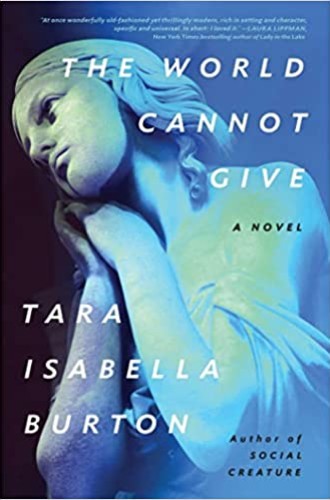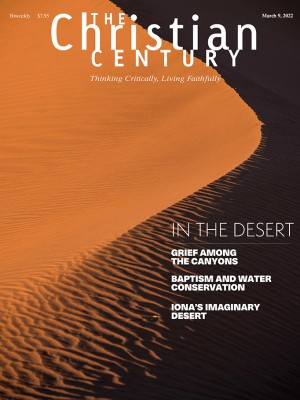At Tara Isabella Burton’s fictional boarding school, the hunger for transcendence gets dark
A tale of beauty, religion, and how easy it is to exploit them
Early in my first year at an eccentric liberal arts college, some students organized an extracurricular reading of Plato’s Symposium in our professor’s apartment. For practical and legal reasons there would be no wine, but to make up for this lack of authenticity it was agreed that we would all attend in togas. I don’t recall what conclusions, if any, we reached together, but a photograph survived and now lives on my hard drive. Those faces look out across 25 years with both the genuine desire to walk among the berobed immortals and the self-aware tomfoolery of student life. Today we might borrow a term from the world of movie and game fandom and call it LARPing (live-action role playing).
Residential education allows these quick changes of emotional and intellectual costume. Academic enthusiasms, experiments with identity, and personal or political passions can all flourish on campus. People can do and be many things they couldn’t before and, perhaps, can’t after. They can be in earnest and they can pose, and they can certainly lose sight of the difference. In Tara Isabella Burton’s new novel, a clique of aesthetes at a Maine boarding school lose sight of the difference between an earnest conversion and a political pose. But the consequences end up far beyond adult embarrassment at taking oneself and one’s preoccupations too seriously.
Read our latest issue or browse back issues.
Beginning with the arrival of Laura Stearns, a blank and sensitive junior-year transfer student from Nevada, the story takes us into the college-like atmosphere of St. Dunstan’s. Laura is obsessed with a novel by an alumnus who died in the Spanish Civil War after writing about—that’s right—student life at St. Dunstan’s. The anachronisms of the place, like mandatory attendance at weekly choral Evensong, are as fusty and irrelevant to much of the current student body as the romantic novelist is. But they fascinate Laura, who yearns for aesthetic transcendence, for the “shipwreck of the soul” her hero wrote about.
The chapel choir, led by a virtuosic, disciplined, and domineering student named Virginia Strauss, draws an awestruck Laura in. Virginia, too, is enamored of the old novel and its writer. She sees his polemic against “the sclerotic modern world” (a phrase that recurs to the point of parody) embodied in the choir members’ struggle against the forces of change at the school.
A Christian catechumen motivated much more by ideas of order and “moral realism” than anything specific about Jesus or the church, Virginia looks ahead to a future at a right-wing think tank and leading a revolution of some kind. She studies late into the night and runs early in the morning with a severity Laura admires, but it’s not clear what exactly her budding authoritarian personality wants. Even so, Virginia’s passionate vagueness has drawn the other choir members, all boys, into her preoccupations and fashioned the group into a recognizable campus faction.
On the other side, a student activist is petitioning to make Evensong optional and to remove the statue of the novelist—who, when he died in the Spanish Civil War, was fighting on the side of the fascists. St. Dunstan’s turns out to be a microcosm of our contemporary culture war over curriculum and commemoration.
Like Social Creature, Burton’s electric first novel, The World Cannot Give is driven by the submerged emotional needs, dynamics of dominance and submission, and unexpressed conflicts that can haunt intense friendships. As Laura tries to make herself into the perfect acolyte for Virginia, she becomes enmeshed in the intrigues and rivalries of the group, avoiding her real desires and courting danger. Breakups, realignments personal and aesthetic, a sex video, and eventually a body count arrive.
Laura is not the first fictional impressionable nobody from the American West to go east for school and end up in the midst of a cultish group bonded by the aspiration for transcendence and rejection of the ordinary world around them. In Donna Tartt’s The Secret History, a circle of obsessive classics students get so deep into their material that they end up killing a local farmer in a Dionysian frenzy. Tana French borrowed the setting of an insular group of graduate students for her mystery The Likeness, in which a murderer justifies his actions on the basis of a kind of Nietzschean commitment to a life of the mind. This intellectualized murder plot, which may have its roots in the story of Leopold and Loeb or even Raskolnikov, struggles to make the crimes congruent with their intellectual and emotional stakes. Everyone in these books would be better off lounging around in bedsheet togas looking silly once in a while.
Burton’s characters in The World Cannot Give talk about tradition and “the democracy of the dead.” They fear succumbing to “the sclerotic modern world” and vow to become “World-Historical” in combating it. There is no depth to these clichés. The characters are mouthing phrases they’ve heard or read somewhere. They are, in the barest literal sense of the word, a reaction, masking the characters’ true desires and unexamined motives.
And so the story ends up being not about ideas of beauty, religion, or the modern world so much as the ability of a disturbed and manipulative person to exploit those ideas—and the sincere yearnings on whose surface they rest, for any purpose or none at all. The ideas themselves don’t matter; only the incongruity between the ideas and reality matters.
That incongruity is the stuff of horror, and on that level The World Cannot Give succeeds. But as the plot took its late, dark turns, I found myself wishing that it had gone in a different direction. Incongruity is also the basis of comedy, and this tableau of adolescent conflict, aspiration, and identity crisis could have resolved into satire.
It’s a little bit funny, after all, to have teenage reactionaries (even at a boarding school) quoting G. K. Chesterton and getting really into traditionalist Anglicanism. But why shouldn’t they? Many rare species can grow in a single hothouse. A deftly ambitious writer like Burton could give them all a place. But the betrayals and mortifications these characters suffer are ordinary. Choral Evensong and catfishing, think tanks and sex tapes, love and LARPing: our best and our worst mingle at the source, and one great advantage to experiencing it all in dorms around a quad is that you usually have the chance to laugh after you’ve cried.
St. Dunstans’s long-dead author “wrote a mediocre book and died on the wrong side of history, for no reason but that he was rich, and young, and bored,” a character observes near the end, “and the sclerotic modern world was the same then as it is now, and always will be; world without end.” Amen and amen. This is a lesson taught better by failure and disappointment than by madness and chaos. But one way or another, the knowledge only comes when we’ve taken the costume off.







